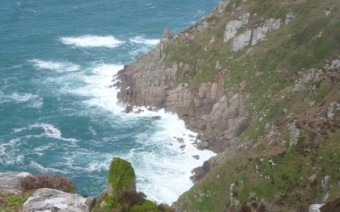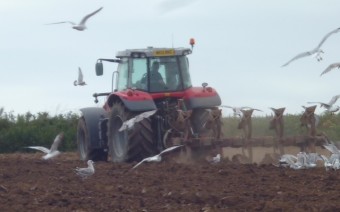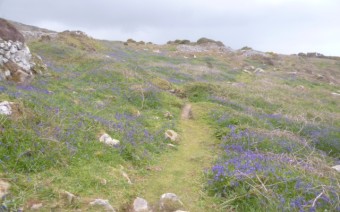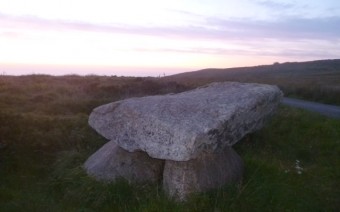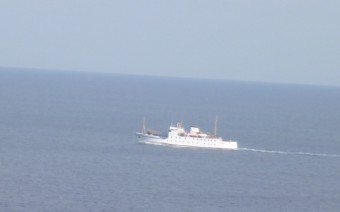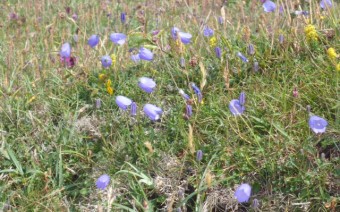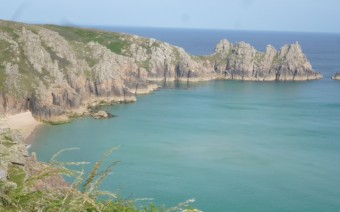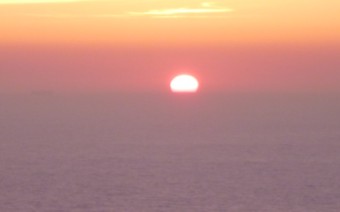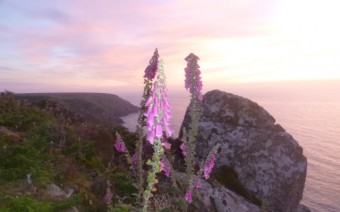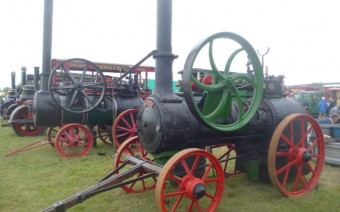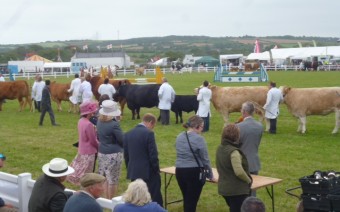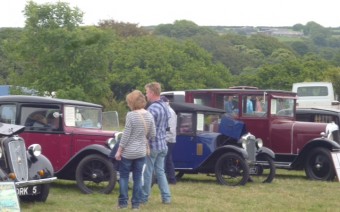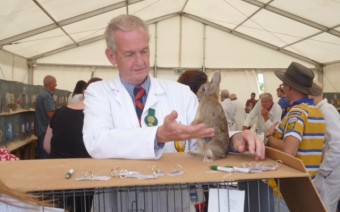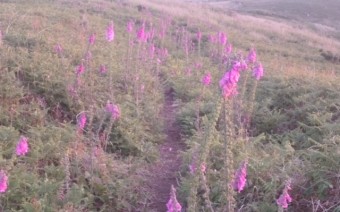Excursions and Things To Do
There are a great number of scenic spots and activities to be explored in the local area.
Around the Lizard Peninsula:
Kennack Sands: ~ a lifeguard protected family beach. It is a perfect spot to look at sea anemones in the rock pools at low tide. There is also the chance to go swimming safely and to make sand castles. The geographer may like to examine the cliffs and the wave-cut platform. It is here that one can enjoy seaside traditions, from building sandcastles to daring the English sea! There are two cafes to buy ice-creams and hot/cold drinks.
~ Mullion Cove: a tiny fishing harbour where you can take a local boat around Seal Island. One can well imagine smugglers here! Lizard Adventure have established a base recently offering a chance to go kayaking. At low tide caves are exposed and can be explored safely. The stack and arch make a super photograph.
~ Poldhu Beach: popular with surfers and has a surfers cafe. There is a monument here to Marconi commemorating his first transatlantic radio message.
~ Gunwalloe Beach: it has a small ancient church set amongst the sand dunes. Historians may be interested that many of the young children buried here died in mining accidents during the nineteenth century.
~ Kynance Cove: offers the geologist superb examples of Serpentine rock to examine and photograph. There is an eco-cafe here and spectacular views from the clifftop.
~ Lizard Point: This is the most southerly point of the UK and has a working lighthouse.
~ Bass Point: you can find the old Lloyds Signal Station building, where ships were identified using semaphore flags and their details telegraphed to London. There is also a reconstructed Marconi Hut from where the first wireless messages were sent from shore to ship.
~ Goonhilly Downs: offers a completely contrasting landscape. The infertile serpentine clay soil has given rise to a wild, empty heathland where the botanist can find flora unique to the UK amongst the heather and gorse. Cattle and ponies graze here sometimes and various migratory birds come to the lonely ponds. During the Second World War the military took over the land and set up an early radar station to protect Falmouth Harbour, there are some old bunkers to see. In the 1960s the GPO set up Britain’s first satellite earth station and the huge communication dish antennae can still be seen.
~ Carleon Cove: An ancient water mill can be seen and serpentine rock used to be exported to London, by ship, to decorate grand houses.
~ Windmill Farm: has a nature trail passing dragonfly ponds. If you are extra observant you will notice some old relics from the Second World War!
There are numerous villages to visit and explore:
~ Mullion has a family run chocolate shop.
~ Cadgwith is a traditional fishing village with thatched cottages clustered around a tiny cove.
~ Gweek lies at the head of an inland creek and has a famous seal sanctuary.
~ St. Keverne has a fine village square, an ancient church and the Roskillys dairy farm with its popular ice cream parlour.
Off The Lizard Peninsula:
~ Penzance: is the last town in Britain and is famous for its harbour and the scenic views of St. Michaels Mount. It is here that you can catch a ferry to The Scilly Isles. It has artistic connections to the famous Newlyn School of British painters. It has an annual Literature Festival and also a Solstice celebration.
~ Porthcurno: has the well known amphitheatre ‘The Minack Theatre’ (super experience of watching a play with the sea as the backdrop) and an underground Telegraph Museum.
~ Mousehole: a quaint fishing village where ‘The Mousehole Cat’ children’s book is set.
~ St. Just: a mining village where you can experience going down an old tin mine. Geevor Mine has visitors from all over the world. There are also some art galleries and some old prehistoric sites nearby.
~ Lands End: famous for being the last point of Britain in the South! On a clear day you can see views of the Scilly Isles.
~ Sennen Cove: has a large sandy beach and has the interesting Roundhouse Gallery to view and buy local artists works.
~ St Ives: is a fishing village and has superb sandy beaches. It is well known for it connection to art. There is the ‘ Tate St Ives ‘ gallery, Barbara Hepworth’s sculpture garden and the pottery of Bernard Leach. It is an excellent place for art students!
~ Gwithian Beach: has sand dunes and is a surfers paradise!
~ Godrevy: from the cliff top you have excellent views of the lighthouse that was made famous by Virginia Woolf in her novel ‘To The Lighthouse’. It is also a good place to spot seals.
~ Falmouth: has the National Maritime Museum and has a Tall Ships festival in late August.
~ Truro: is the provincial capital with its cathedral and The Royal Cornwall Museum. There is also the chance to see a play in The Hall For Cornwall theatre (sometimes productions come down from the West End) or a film at the cinema.
~ Newquay: has a small airport and is known as the ‘Surfers Mecca’!
~ Padstow: is a fashionable seaside resort with designer shops and a large collection of restaurants.
~ Tintagel: a castle where King Arthur lived.
~ St Austell: famous for The Eden Project.
~ Wadebridge: where The Royal Cornwall Show is staged annually.
~ Stithians: has an annual, well known agricultural show in mid July.
Cornwall is also famous for its gardens and there are a wide variety to visit and explore: Glendurgan, Trebah, Trengwainton, Trelissick, The Lost Gardens of Heligan.


